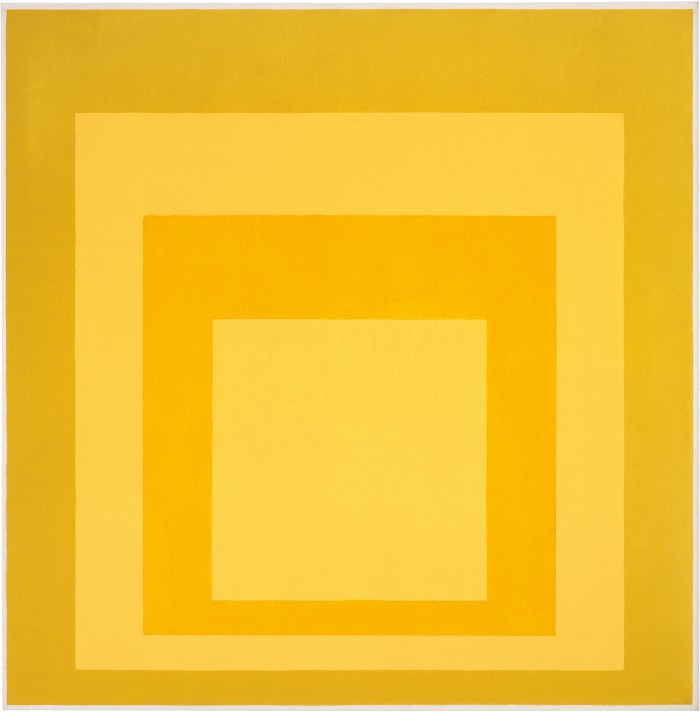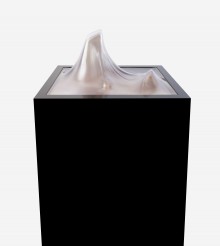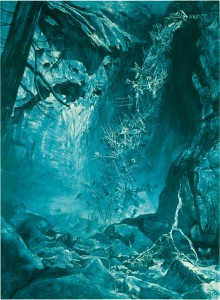Josef Albers
Homage to the Square: Diffused 1969

© 2014 The Josef and Anni Albers Foundation / Artists Rights Society (ARS), New York. Reproduction, including downloading of ARS member works is prohibited by copyright laws and international conventions without the express written permission of Artists Rights Society (ARS), New York.
Audio Description (02:28)
Full Audio Transcript (Expand)
Homage to the Square: Diffused
Homage to the Square: Diffused is a four-foot-by-four-foot oil painting on the roughly textured side of a panel of masonite painted by Josef Albers in 1969. It is one in a series of hundreds of similar works painted between 1949 and 1976 that feature a square nested within several more squares. Each square is its own single color, with the smallest in the center of the nest, growing larger as they move toward the panel’s edges. The paintings are orderly and methodical, using pure, unmixed paints applied with a palette knife.
This painting has a sharp, thin white frame, and the largest painted square then becomes like a frame or border for the next one within it. This nesting pattern repeats with two more smaller squares, giving the illusion of peering into a tunnel that narrows the further it goes. For all four painted squares, the bottom borders are thinnest, the tops are thickest, and the sides are even with each other at around half the thickness of the top borders.
Albers used four hues of yellow, applied uniformly but not robotically: Cadmium yellow, Hansa yellow light, Cadmium yellow medium #2, and Naples yellow light. Even from a distance, the outline of each square appears to waver just a bit here and there. Some corners are sharp while others are softly rounded, though there appears to be no particular pattern to this slight irregularity. The innermost square is lemon yellow, next a tangerine orange, then a reddish yellow that is not quite orange, and the outermost square a rich mustard yellow with a suggestion of brown.
Homage to the Square: Diffused nods to Albers’ pre-World War Two time as an instructor at the Bauhaus by featuring unadorned geometric shapes. At the same time, it incorporates post-war Pop and Minimalist elements through the repetition of a mundane shape. While the sameness of all of the squares might suggest it could be mass produced, the subtle variations along the edges, and an occasional appearance of the tiniest spots of glittering white primer showing through the paint assures the viewer that this is a handmade work of art.
Together with his wife, the textile artist Anni Albers, Josef Albers immigrated to the United States in 1933 to escape the Nazi regime. Having been an instructor at the Bauhaus in Germany, Albers became a renowned teacher in his adopted home, first at Black Mountain College in North Carolina and later at Yale University. In 1964 he published the influential text Interaction of Color, a handbook based on the color course he had developed over four decades of teaching.
Homage to the Square: Diffused is one of hundreds of concentric-square paintings the artist made between 1949 and 1976. Each work in the series is designed to demonstrate the complex perceptual effects produced by the interaction of different colors. On the back of this panel Albers specified the four colors and brands of yellow paint used, all of which he applied with a brush in one coat directly out of the tube. His systematic approach and his use of unmixed, commercially available paints links his work to that of a younger generation of Pop and Minimal artists of the 1950s and 1960s.
-Sidney Simon, PhD ‘18






